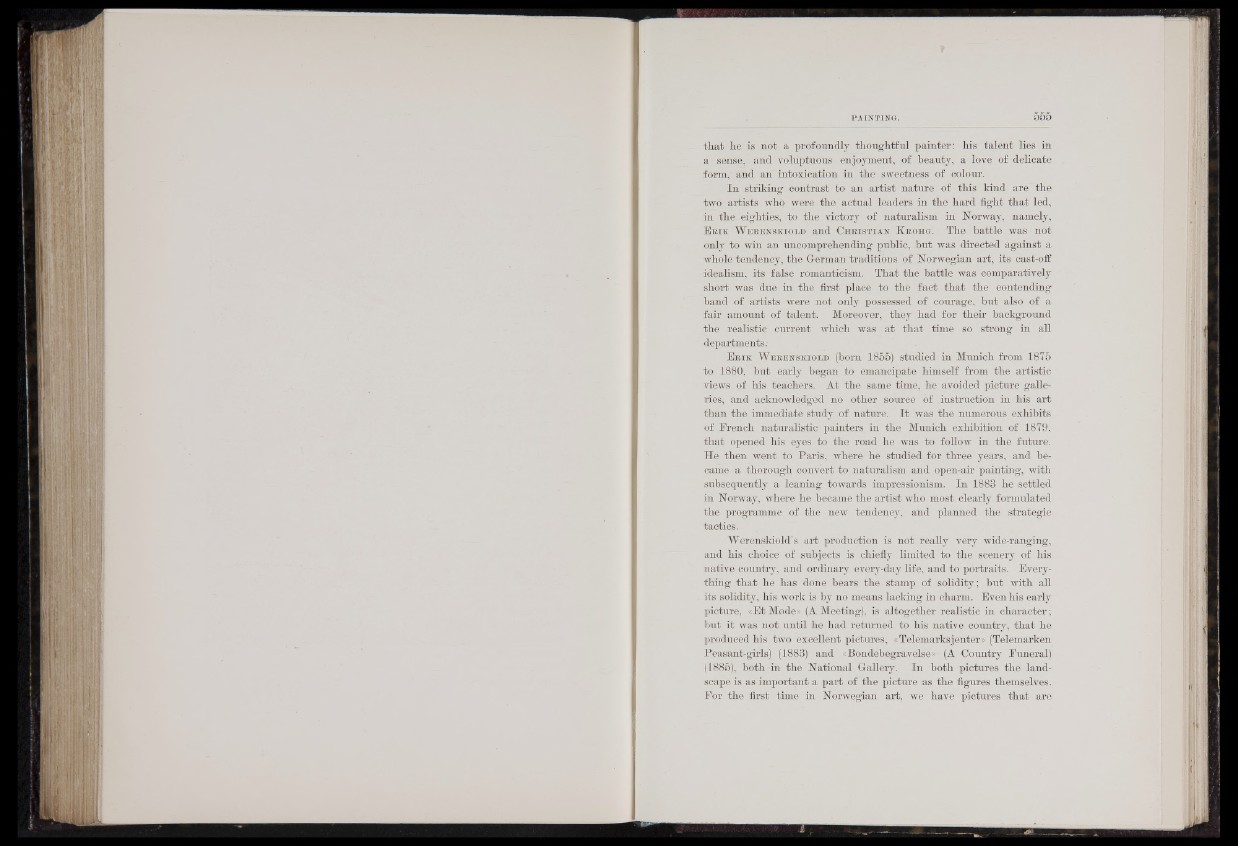
that he is not a profoundly thoughtful painter: his talent lies in
a sense, and voluptuous enjoyment, of beauty, a love of delicate
form, and an intoxication in the sweetness of colour.
In striking contrast to an artist nature of this kind are the
two artists who were the actual leaders in the hard fight that led,
in th e . eighties, to the victory of naturalism in Norway, namely,
E r i k W e r e n s k io l d and C h r i s t i a n K r o h g . The battle was not
only to win an uncomprehending public, but was directed against a
whole tendency, the German traditions of Norwegian art, its cast-ofi:
idealism, its false romanticism. That the battle was comparatively
short was due in the first place to the fact that the contending
band of artists were not only possessed of courage, but also of a
fair amount of talent. Moreover, they had for their background
the realistic current which was at that time so strong in all
departments:
E r i k W e r e n s k io l d (born 1855) studied in Munich from 1875
to 1880, but early began to emancipate himself from the artistic
views of his teachers. At the same time, he avoided picture galleries,
and acknowledged no other source of instruction in his art
than the immediate study of nature. I t was the numerous exhibits
of French naturalistic painters in the Munich exhibition of 1879,
that opened his eyes to the road he was to follow in the future.
He then went to Paris, where he studied for three years, and became
a thorough convert to naturalism and open-air painting, with
subsequently a leaning towards impressionism. In 1883 he settled
in Norway, where he became the artist who most clearly formulated
the programme of the new tendency, and planned the strategic
tactics.W
erenskiold’s art production is not really very wide-ranging,
and his choice of subjects is chiefly limited to the scenery of his
native country, and ordinary every-day life, and to portraits. Everything
that he has done bears the stamp of solidity; but with all
its solidity, his work is by no means lacking in charm. Even his early
picture, «Et Mode» (A Meeting), is altogether realistic in character;
but it was not until he had returned to his native country, that he
produced his two excellent pictures, «Telemarksjenter» (Telemarken
Peasant-girls) (1883) and «Bondebegravelse» (A Country Funeral)
(1885), both in the National Gallery. In both pictures the landscape
is as important a part of the picture as the figures themselves.
For the first time in Norwegian art, we have pictures that are